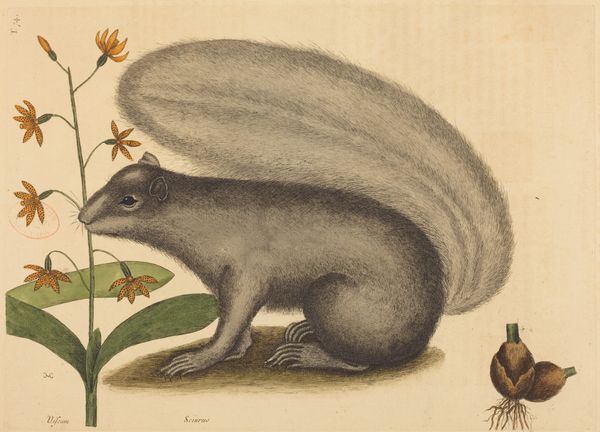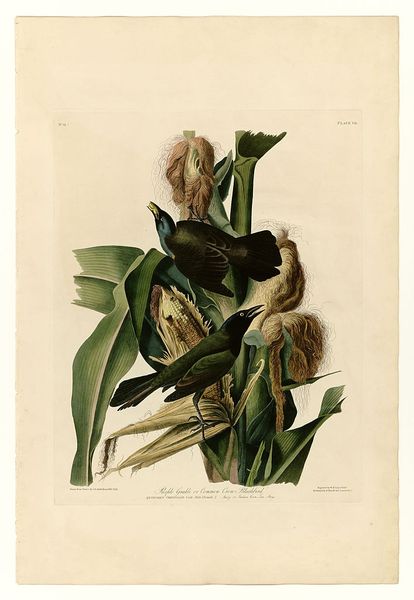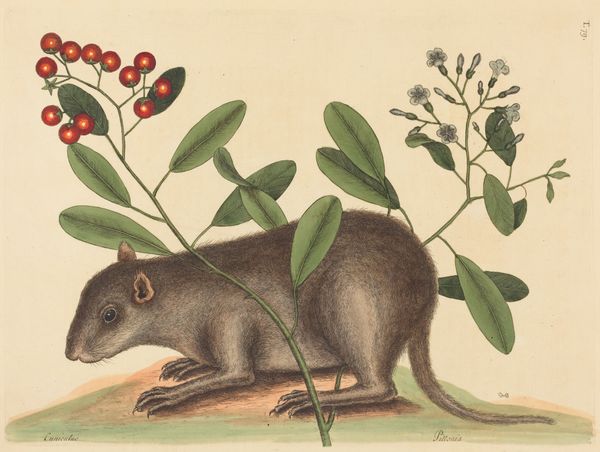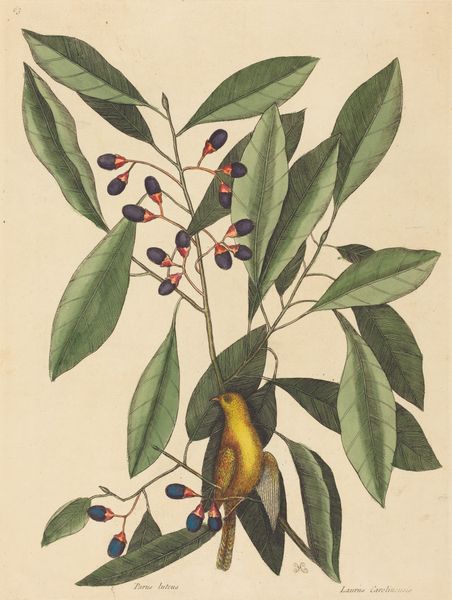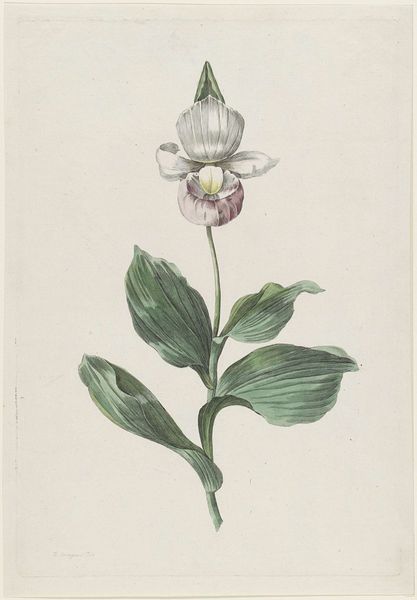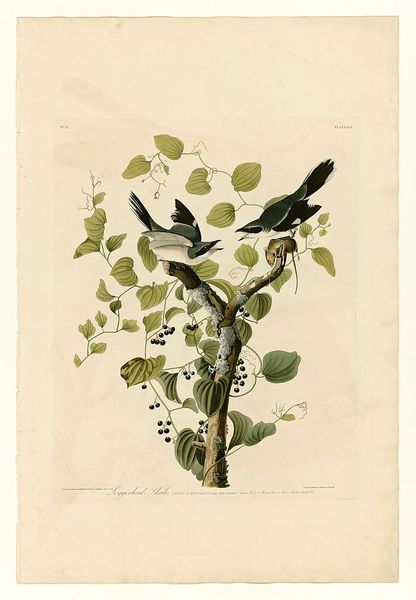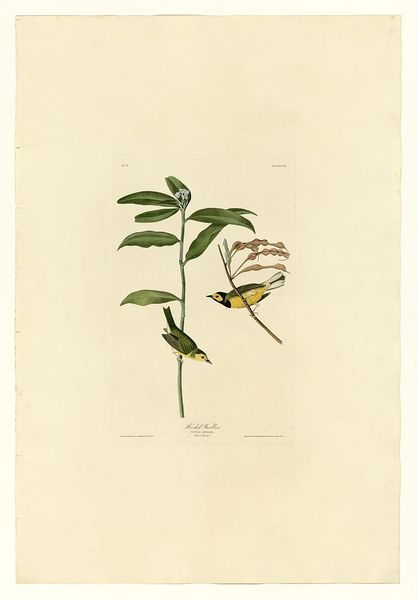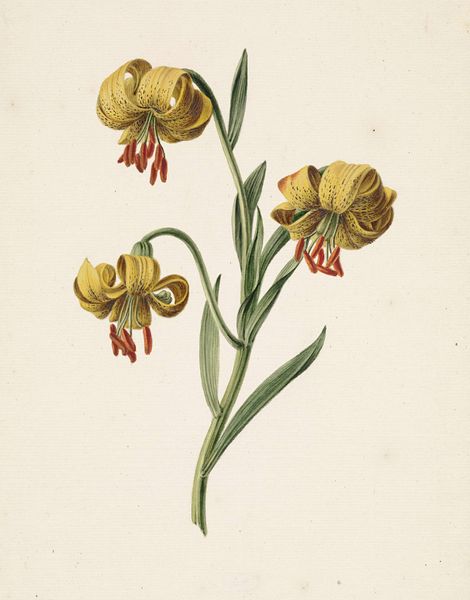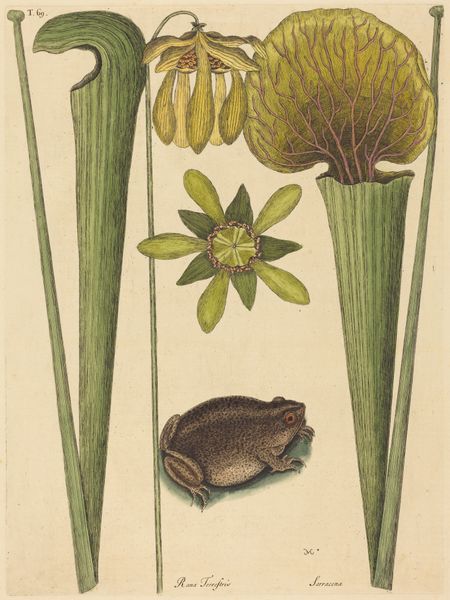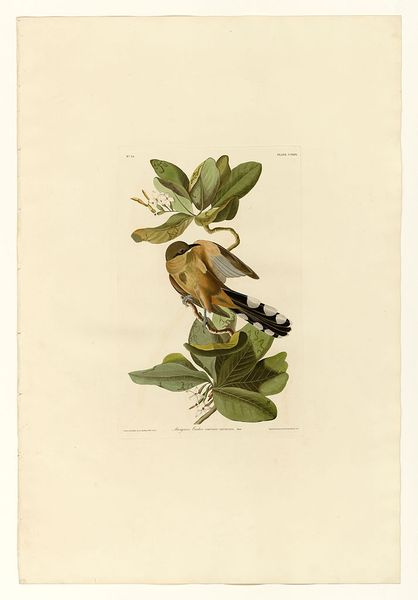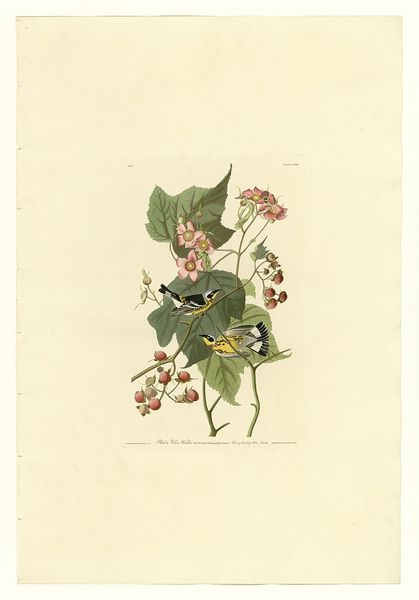
hand-colored-etching, painting, print, paper, watercolor, engraving
#
hand-colored-etching
#
animal
#
neoclassicism
#
painting
# print
#
landscape
#
paper
#
watercolor
#
england
#
watercolour illustration
#
engraving
#
botanical art
#
watercolor
Dimensions: 13 3/4 x 10 in. (34.93 x 25.4 cm) (sheet)
Copyright: Public Domain
Curator: Mark Catesby's "Black Squirrel," dating from 1731 to 1743, presents a charming natural scene. Editor: It's a bit stiff, isn't it? The squirrel seems pasted onto the background. Almost like a decorative fabric sample. Curator: Well, Catesby wasn't aiming for pure realism. His prints, like this hand-colored etching and engraving, were instrumental in shaping European understanding of North American flora and fauna. He was creating a visual encyclopedia. Editor: I see it now, less a snapshot of nature and more a document of labor. He etched the plates himself and employed others, probably with specific craft expertise, to add the watercolor. What was the division of labor like? It looks so delicate; you can see the paper’s texture beneath. Curator: Catesby published "The Natural History of Carolina, Florida, and the Bahama Islands." These weren’t just scientific illustrations; they catered to wealthy patrons eager to visualize the exotic New World. The project was deeply embedded in the colonial project. Editor: Colonial project, yes, which dictated the accessibility and consumption of such material, but this is itself raw material carefully composed and treated; pigment, paper, etching: I suppose I’m always interested in the literal components. And how these became imbued with scientific "accuracy." The skill involved. Curator: Exactly. And beyond scientific accuracy, these images held symbolic value. The Black Squirrel became shorthand, in some ways, for the resources and wonders that the colonies could provide to England. Editor: And the plants included with it, Lady Slippers. The work then has this fascinating balance: specimen against symbolic offering, science intertwined with implicit societal structures. It really encourages a deep consideration of production and cultural perception. Curator: It does make one reconsider the relationship between art, science, and colonial ambition. Editor: A beautiful, slightly unsettling intersection—expressed through close observation of the natural world.
Comments
No comments
Be the first to comment and join the conversation on the ultimate creative platform.
